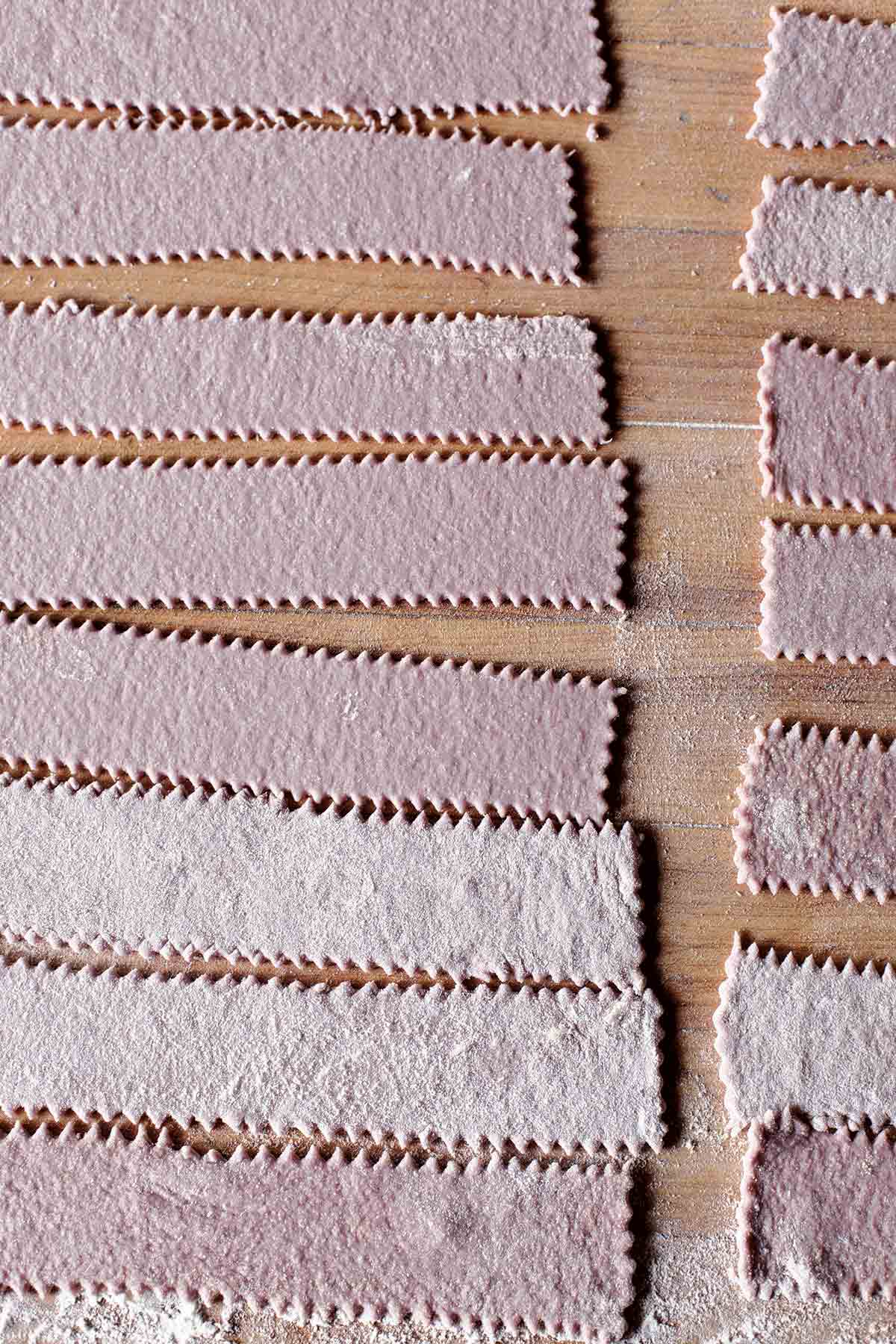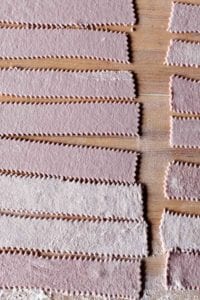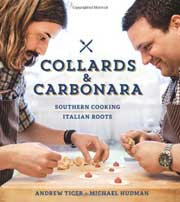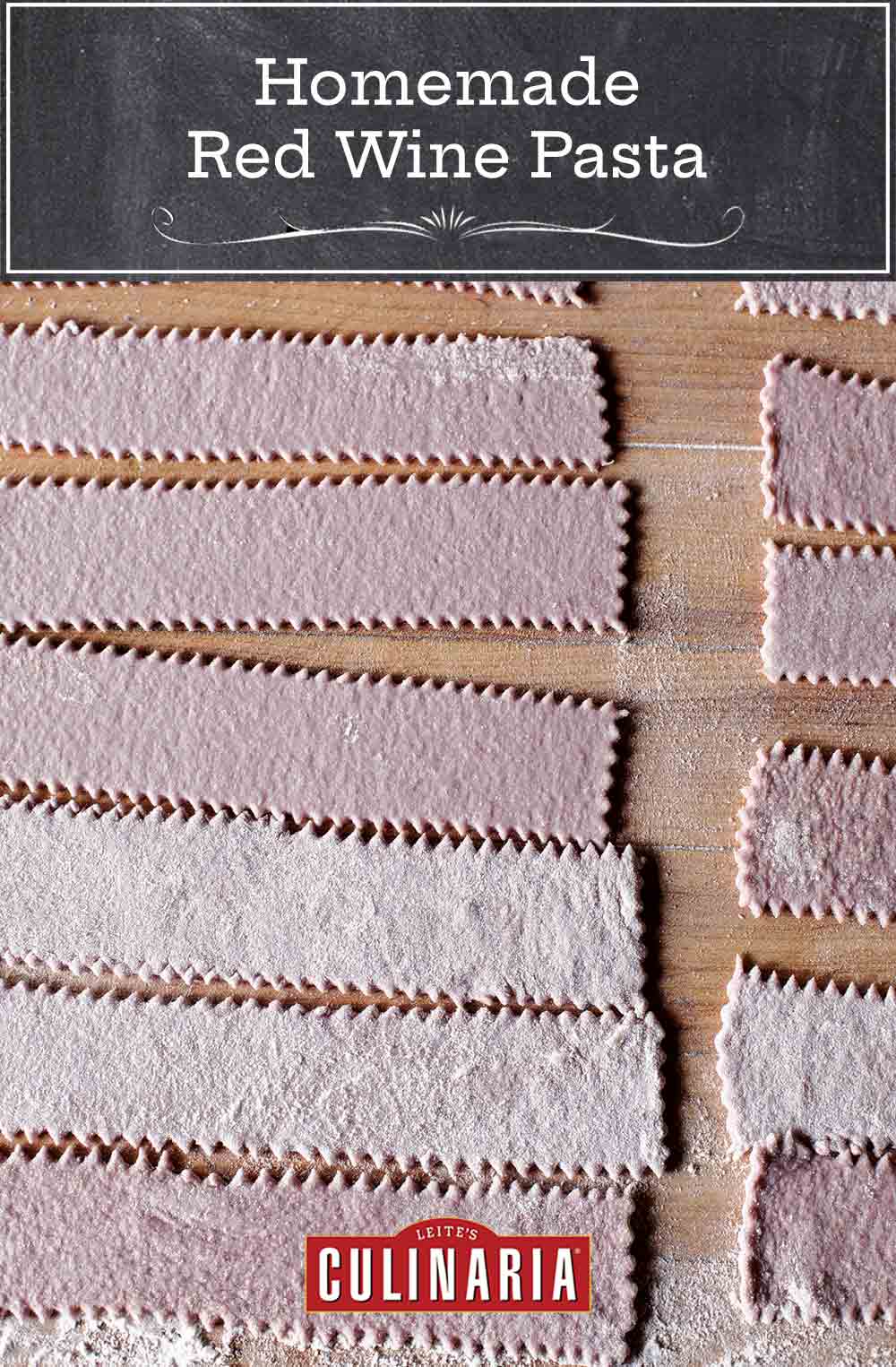
This red wine pasta dough calls for that namesake ubiquitous Italian beverage rather than water in this stunning and silken homemade pasta recipe. (Brilliant, no?!) What results is stunning to the eye as well as the palate. Don’t let its staggeringly keen looks keep you from smothering its vibrant hue with all manner of sauces, though. We prefer the it rolled out in wide ribbons known as pappardelle, shown in the photo above, a pasta shape that’s especially adept at standing up to the robustness of ragus. And to clarify, when we say this intensely hued red wine pasta is simply stunning, we also mean that it comes together so simply as to stun us. Love when that happens!–Renee Schettler Rossi
What Is “00” Flour?
The traditional flour used for pastamaking, Italian “00″ flour isn’t inexpensive. But it is worth its weight in gold. Or pasta. Whichever you value more. The names 00 and 0 Flour refer to specifically Italian milled flour that is used for pasta making. It’s a particularly fine grind of flour (known as Doppio Zero, which simply means “double zero”). It also contains slightly less gluten than all-purpose flour, which makes for a tender pasta experience. Look for 00 flour at Italian delis and markets, specialty stores, and some grocery stores.

Homemade Red Wine Pasta
Ingredients
- 4 large eggs
- 2 tablespoons extra-virgin olive oil
- 2 cups dry red wine
- 8 cups 00 flour* (see * above), plus more for dusting
- Semolina flour, for dusting
- Salt, to taste
Instructions
- Crack the eggs into a large liquid measuring cup and add about 2 tablespoons olive oil (roughly 2 good glugs). Pour enough wine into the measuring cup until the total liquid volume measures 2 1/2 cups (750 ml). Whisk the ingredients together.
- Dump the flour in a bowl and make a well in the center. Pour the wine mixture into the well and, using your hands, work the liquid into the flour until the mixture starts to come together in a ball.
- Turn the dough ball out onto a clean work surface and knead the dough until it’s smooth and has a nice elasticity, about 10 minutes. (The dough is ready when you press it with a fingertip and it springs back immediately.) Wrap the pasta dough with plastic wrap and let it rest at room temperature for 30 minutes.
- To form the pasta dough into pappardelle, as in the photo above, roll the pasta dough through a standard pasta machine set to the number 4 setting. Then dust it on both sides with flour and lay it on a work surface. Cut the sheet widthwise into sections 8 inches long. Using a fluted or straight pasta cutter, cut down the length of the pasta sheet to make noodles about 1 inch wide. Place the noodles, not touching, on a semolina-dusted baking sheet. Otherwise, form it into whatever shape you fancy, using your own experience or the shaping instructions toward the end of this recipe as your guide.
- Bring a large pot of salted water to a boil. When the water is boiling, drop in the pasta and cook until the desired doneness. (If you intend to toss the pasta in a skillet with some sauce and warm it for a minute or two, you should cook it until not quite al dente, 3 to 5 minutes. Don’t worry about the pasta being too toothsome. It will continue to cook in the sauce. If you intend to drain the pasta and dress it with sauce, cook the pasta a minute or so longer.)
- Drain the pasta, reserving some of the cooking water. Serve however your heart desires.
Video

Nutrition
Nutrition information is automatically calculated, so should only be used as an approximation.
Recipe Testers’ Reviews
The homemade red wine pasta was very good and, in fact, my tasters said it was awesome. I only used 1/4 of the red wine pasta recipe and saved the rest for another meal. (It can be kept in the fridge for a short time or frozen or just reduce the recipe.)
The homemade pasta is a lovely, deep, lavender color. I only made half of the red wine pasta dough and it came together just as written without any problems. The pasta was easy to work with, but it did take 40 minutes to roll and cut half the dough recipe.
I was a bit skeptical at first about the instruction to roll the pasta to the #4 setting on your pasta machine. That’s a bit thicker than I normally roll pasta. But it really worked well. I served it with the oxtails braised in red wine, and the thick, soft noodles carried the sauce perfectly and retained a great texture.
Usually you should roll out pasta as thinly as possible. Here the author recommends a medium thickness (#4 on your pasta machine ). I first thought, that’s way too thick and the pasta will taste too chewy. But it works really well, especially since you cook the pasta in the sauce for a couple minutes and don’t want it to break apart. Besides, it’s very easy to roll out with the machine when you don’t make it too thin. Try to get the 00 flour. It really makes a difference in the pasta. If you can’t get it, mix some all-purpose flour with some cake flour to decrease the protein content.













Can this be made with semola rimacinata?
Jim, we haven’t tested the recipe using semola rimacinata and I’m not sure the substitution would work successfully. Since this recipe was developed using 00 flour you may want to stick with that. If you make it, please let us know how it turns out.
Thanks! I’ll stick, then, with the “00”. At some point, I’ll give the semola a try. Be well.
You’re welcome, Jim.